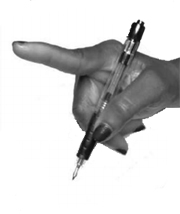AXIS I
2. BODY DISTRIBUTION
Dystonia can be localized to a single body region (focal) or spread to a contiguous region (segmental) or to noncontiguous (multifocal) regions. In generalized dystonia the trunk and at least two other sites are involved, whereas hemidystonia affects the body and limbs on one side.
Adult-onset focal dystonia syndromes are by far the commonest forms of dystonia encountered in practice, with the majority of patients having cervical dystonia or blepharospasm1.
In general, the relationship between the anatomical site of onset and age of onset obeys a caudal-to-rostral gradient: distal leg dystonia typically begins in childhood with inversion and plantar flexion at the ankle and progresses rostrally, whereas blepharospasm usually appears during the 5th or 6th decade of life. Of course, many exceptions exist, and leg dystonia may appear in adults.
The risk for rostral spread is high in early-onset dystonias which begin in the leg, such as DYT-TOR1A. Among the late-onset dystonias, risk of spread is highest for blepharospasm. Blepharospasm often spreads to the lower face and masticatory muscles, and, in a smaller subset of patients, to the cervical musculature.
Definitions of the distribution of dystonia are:
- Focal. Only one body region is affected. Typical examples of focal forms are blepharospasm, oro-mandibular dystonia, cervical dystonia, laryngeal dystonia, and writer’s cramp. Cervical dystonia is considered to be a form of focal dystonia, although by convention the shoulder can be included with the neck1. The majority of isolated dystonias, with or without dystonic tremor, present in adulthood and remain focal or segmental.
In adults, upper limb dystonias are often task specific, such as writer’s cramp or musician’s dystonia.
Limb dystonias emerging in adults without task specificity or those that rapidly lose task specificity should raise concern that they are a presenting sign of an underlying neurodegenerative disorder, especially Parkinson’s disease or an atypical parkinsonian disorder, such as corticobasal degeneration.Cranial dystonia in young adults and children: considerations include Lesch-Nyhan disease, glutaric aciduria, neuroacanthocytosis, and the neuronal brain iron accumulation (NBIA) disorders.
- Segmental. Two or more contiguous body regions are affected. Typical examples of segmental forms are cranial dystonia (blepharospasm with lower facial and jaw or tongue involvement) or dystonia of both arms. The majority of the isolated dystonias, with or without dystonic tremor, present in adulthood and remain focal or segmental.
- Multifocal. Two noncontiguous or more (contiguous or not) body regions are involved.
- Generalized. The trunk and at least two other sites are involved. Generalized forms with leg involvement are distinguished from those without leg involvement.
Adult-onset generalized dystonia is uncommon and should always raise suspicion of the possibility of an underlying neurodegenerative or genetic cause rather than being idiopathic.
- Hemidystonia. Regions of the body restricted to one side are involved. Typical examples of hemidystonia are due to acquired brain lesions in the contralateral hemisphere.

From: Martino D, Espay AJ, Fasano A, Morgante F. Disorders of Movement: A Guide to Diagnosis and Treatment. Berlin-Heidelberg: Springer; 20162.
(vv)Focal Dystonia.mp4(tt)
Blepharospasm started at age 53, and subsequently there was spread of dystonia to the oromandibular regions, and to the neck at age 60.
(vv)Segmental.mp4(tt)
Initial symptoms commenced in the legs, affecting walking, and subsequently spread to the trunk and arms.
(vv)Gendys.mp4(tt)
Dystonic movements affect the right side of the body one hour after taking levodopa.
(vv)Hemidystonia.mp4(tt)

